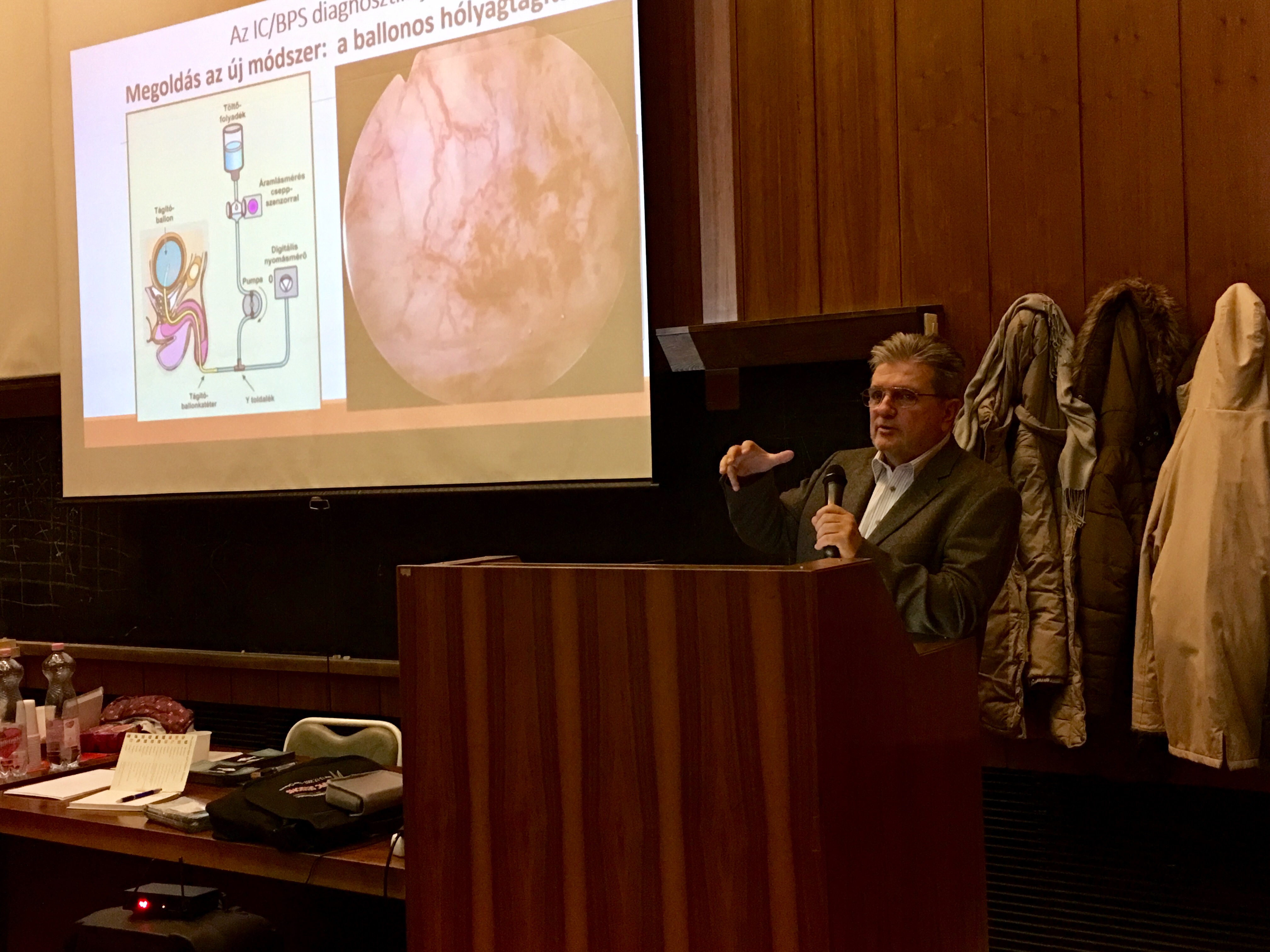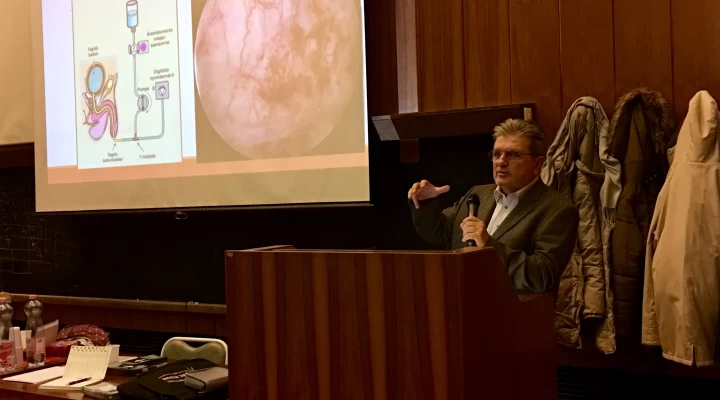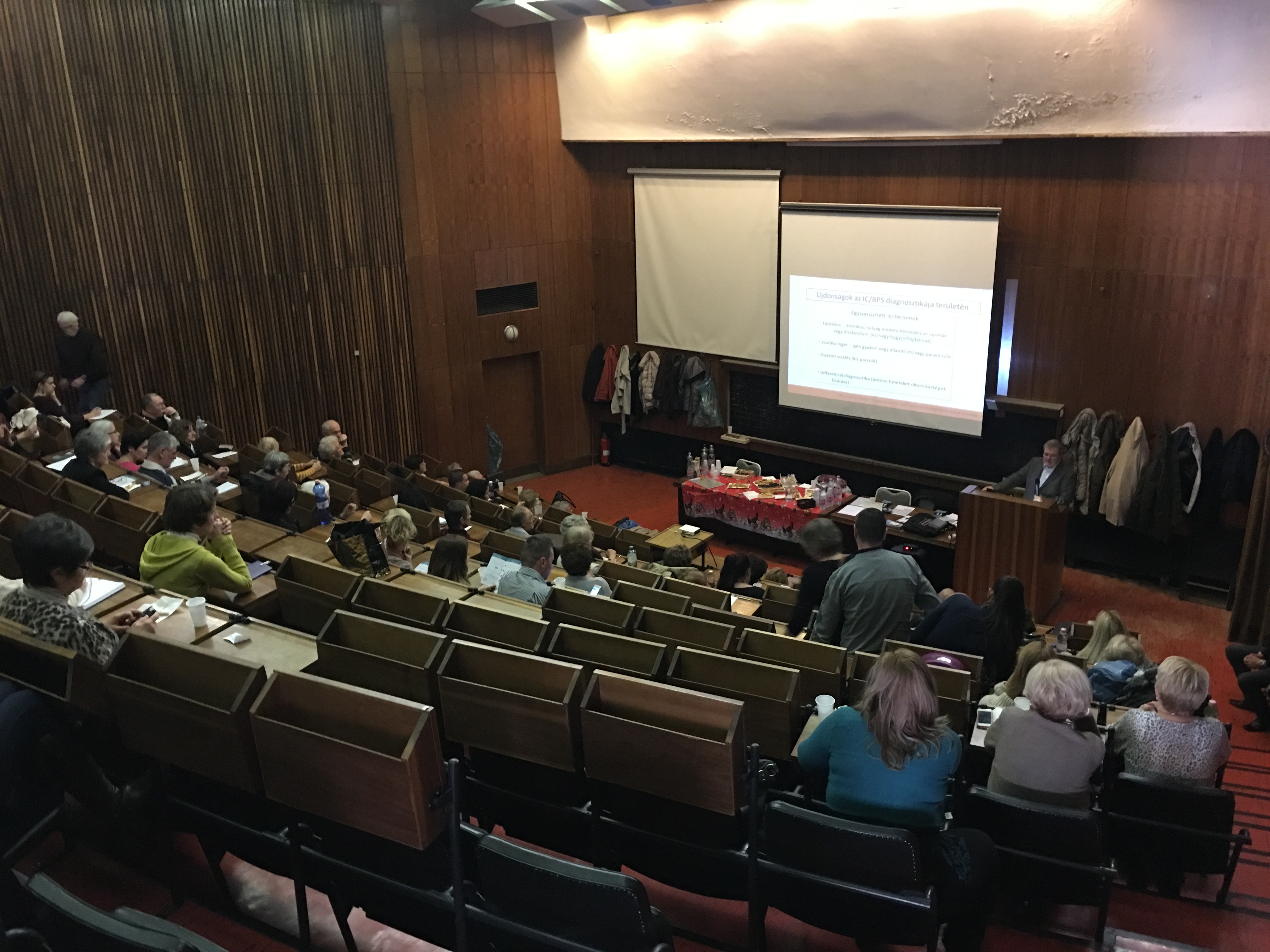A large number of patients, doctors and nurses gathered at Semmelweis University on 3 December 2016. This year was the fifth annual public consultation on bladder pain syndrome, with urologist Sándor Lovász M.D. holding a presentation on the effects of this unpleasant and underdiagnosed condition, as well as the possibilities for treatment.

Unpleasant symptoms, deteriorating quality of life
“We will take lots of breaks during the presentation and the building has plenty of toilets,” said Sándor Lovász M.D. to open the event. This useful announcement was met with great amusement by the assembled audience. This should not come as a surprise given that sufferers of bladder pain syndrome need to empty their bladders up to 50 times during the day, and 15-20 times at night.
The condition has the following symptoms:
- Very frequent urination, smaller quantities
- Pain in the bladder, urethra and vulva
- Sudden, urgent need to urinate
Despite the uncomfortable and intense symptoms, bladder pain syndrome is sadly among the most underdiagnosed diseases in Hungary, doctors are only able to recognize only 1-2% of its appearance. Because of this, most sufferers have no chance of benefiting from suitable treatment. The patient’s symptoms worsen, resulting in a deteriorating quality of life and serious psychological problems. This can often lead to depression, which can end in suicide in extreme cases.
There’s no such illness, you’re making it up!
Sándor Lovász M.D. admitted that it is not easy to diagnose bladder pain syndrome, as there is no one single symptom or test result which will clearly prove the existence of the condition. For complaints related to the pelvis region, doctors are more likely to suspect prostate or gynecological problems. If symptoms persist, doctors often presume that sufferers’ complaints are not genuine and of a psychological origin, so the doctor is more likely to refer patients to a psychiatrist. Proper diagnosis requires time-consuming tests in a relaxed environment. To reach an accurate diagnosis, it is necessary to eliminate the possibility of any other illnesses that may cause the same symptoms, such as inflammations, bacterial infections, kidney stones and cancer.
Doctors require further training
According to Sándor Lovász M.D., the key is for doctors and the general public to recognize the condition. Doctors need much broader information and training, and this applies not only to urologists, but also to general practitioners, gynecologists and psychologists. It is also important that treatment is simpler and more easily accessible to patients. With these two goals in mind, a work group has been formed comprising urologists, psychologists, gynecologists and infectious disease specialists from within and outside Budapest to carry out research into the condition and its treatment, and to provide further information on the topic.
Working together to raise awareness
The patients attending the meeting have developed into a genuine community. They arrived with homemade cakes and had long conversations in the breaks about food and nutrition. Many sufferers are now active in providing information to others about the syndrome. One of them provided an informative booklet about bladder pain syndrome, giving two copies to all the attendees: one for themselves and another to give to their general practitioner. Another patient had made a cookbook filled with recipes to help fight bladder pain syndrome. Sándor Lovász M.D. was delighted to see such endeavors, and encouraged the audience to help provide even more information to the public in the future.
New approach needed
Sándor Lovász M.D. believes that the treatment of bladder pain syndrome requires a change in attitudes. The condition can be treated in the following ways:
- Diet
- Drug treatments
- Injection of drugs into the bladder
- Burning of pain receptors in the bladder mucous membrane
Sándor Lovász M.D. is the only expert on the subject in Hungary, and the only person who can treat the symptoms, so many sufferers travel for hours to receive treatment. This is both expensive and inconvenient for patients.
Objectives for the future:
- Lower cost of treatment
- Reduce distances between doctors and patients
- Self-catheterization using a special syringe head developed by Sándor Lovász M.D. himself. The device is currently being patented and is awaiting approval by the Ministry of National Development.
There is still a lot of work to be done to ensure that the public and medical profession recognize the illness. It’s important for doctors to know and be able to distinguish its symptoms, and that patients know which specialist they should see, as correct diagnosis is the first step on the road to a pain-free life.






